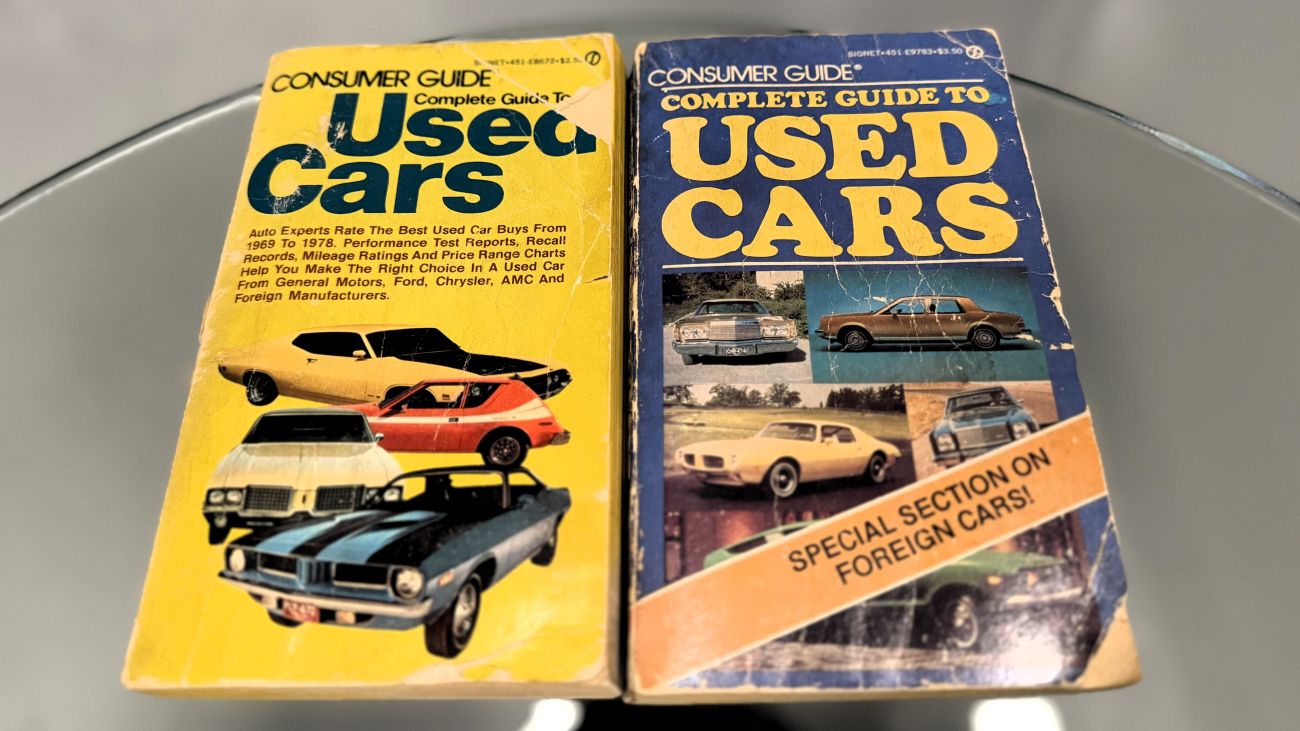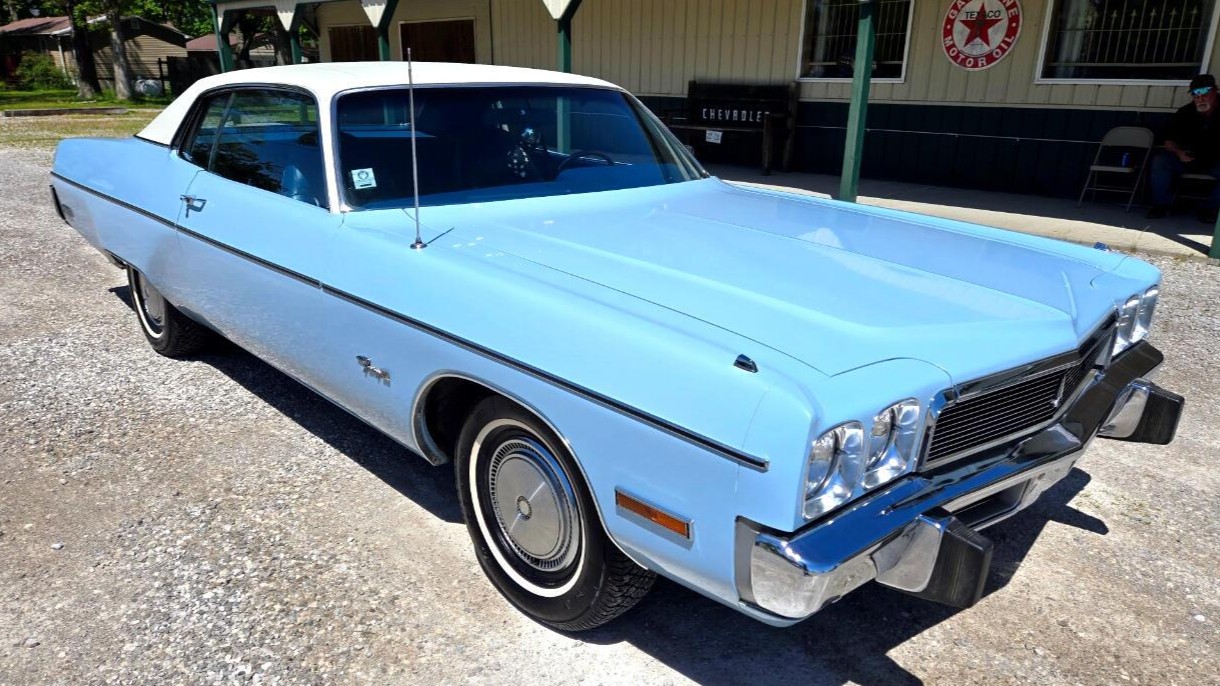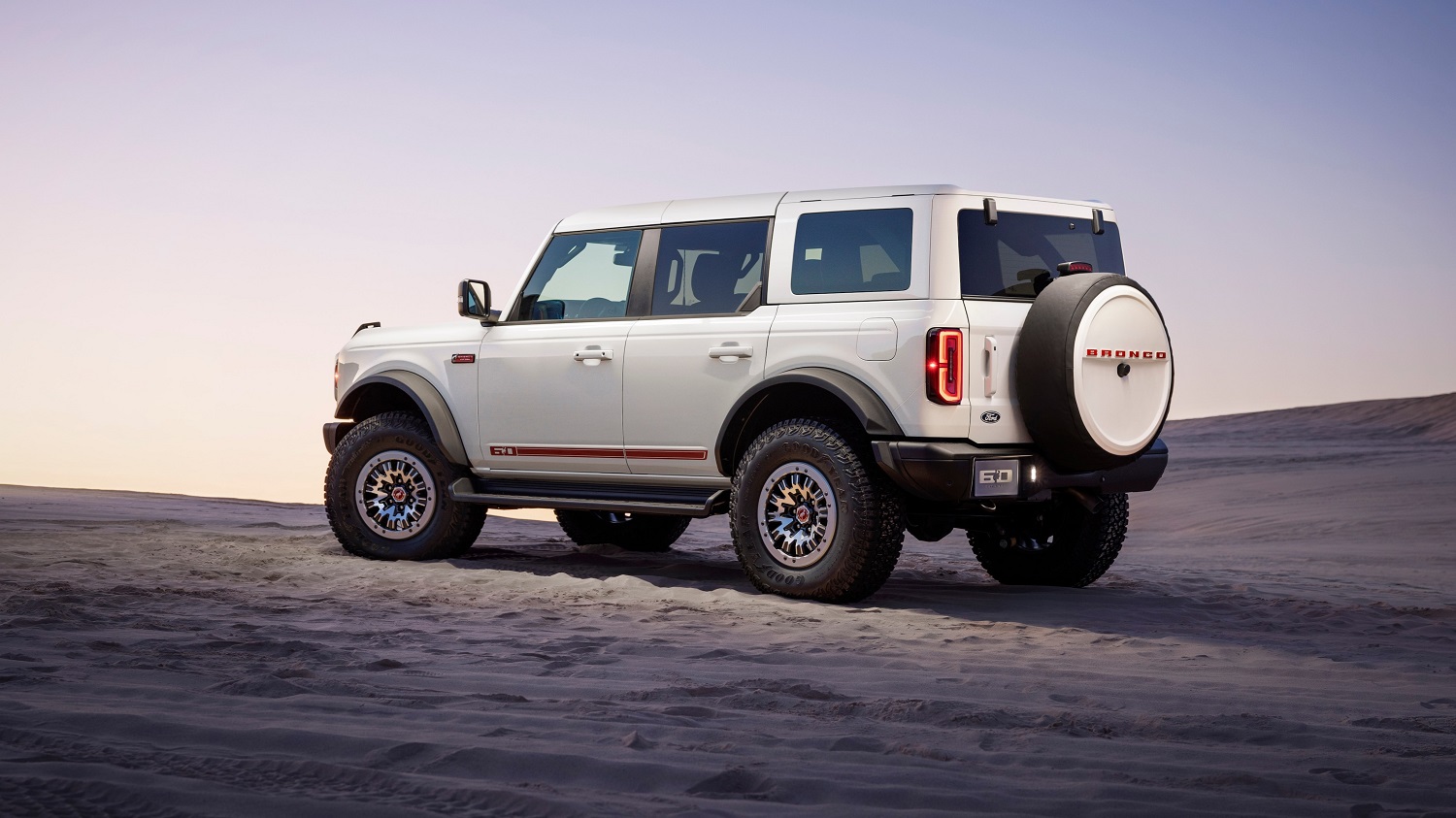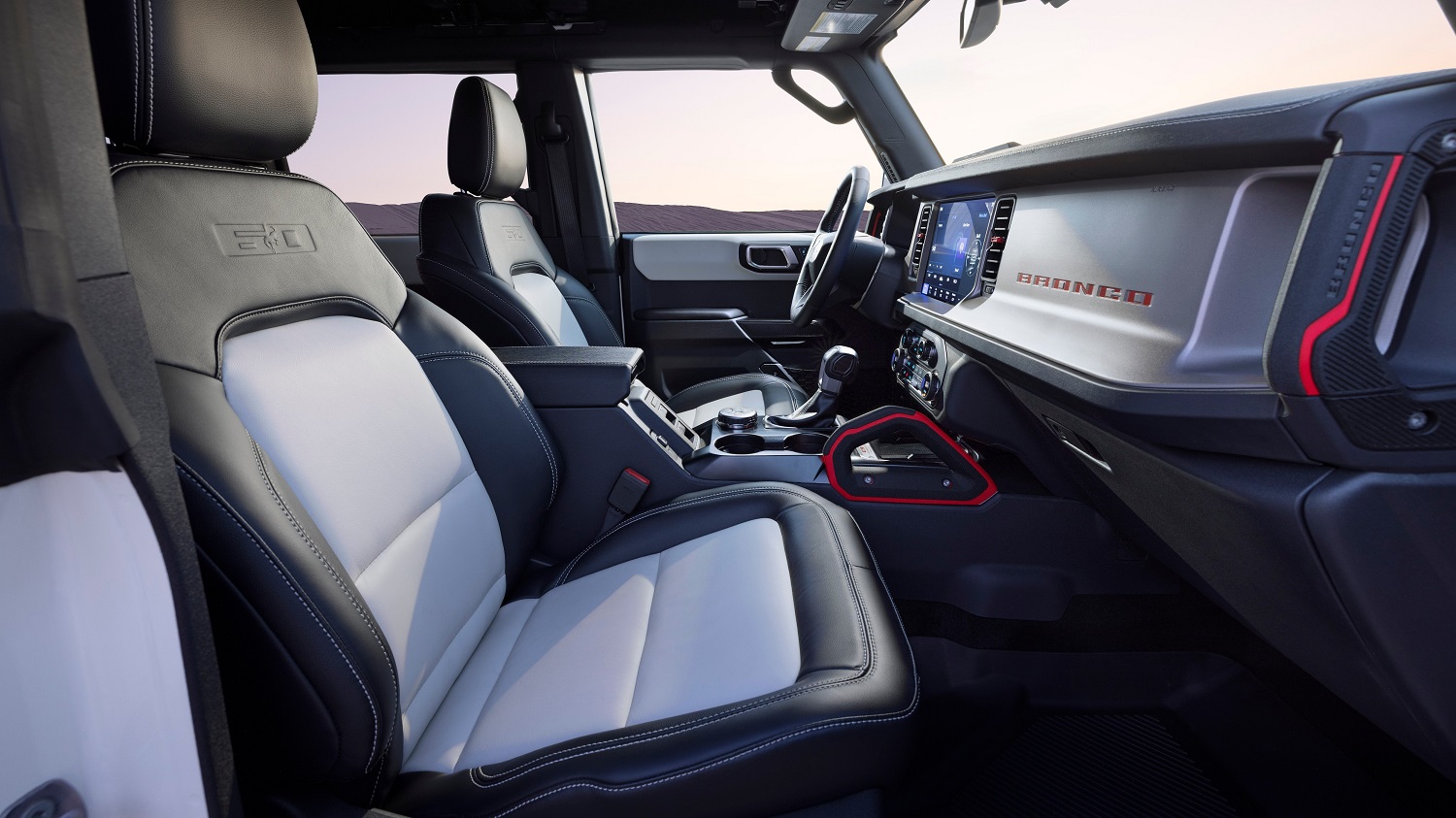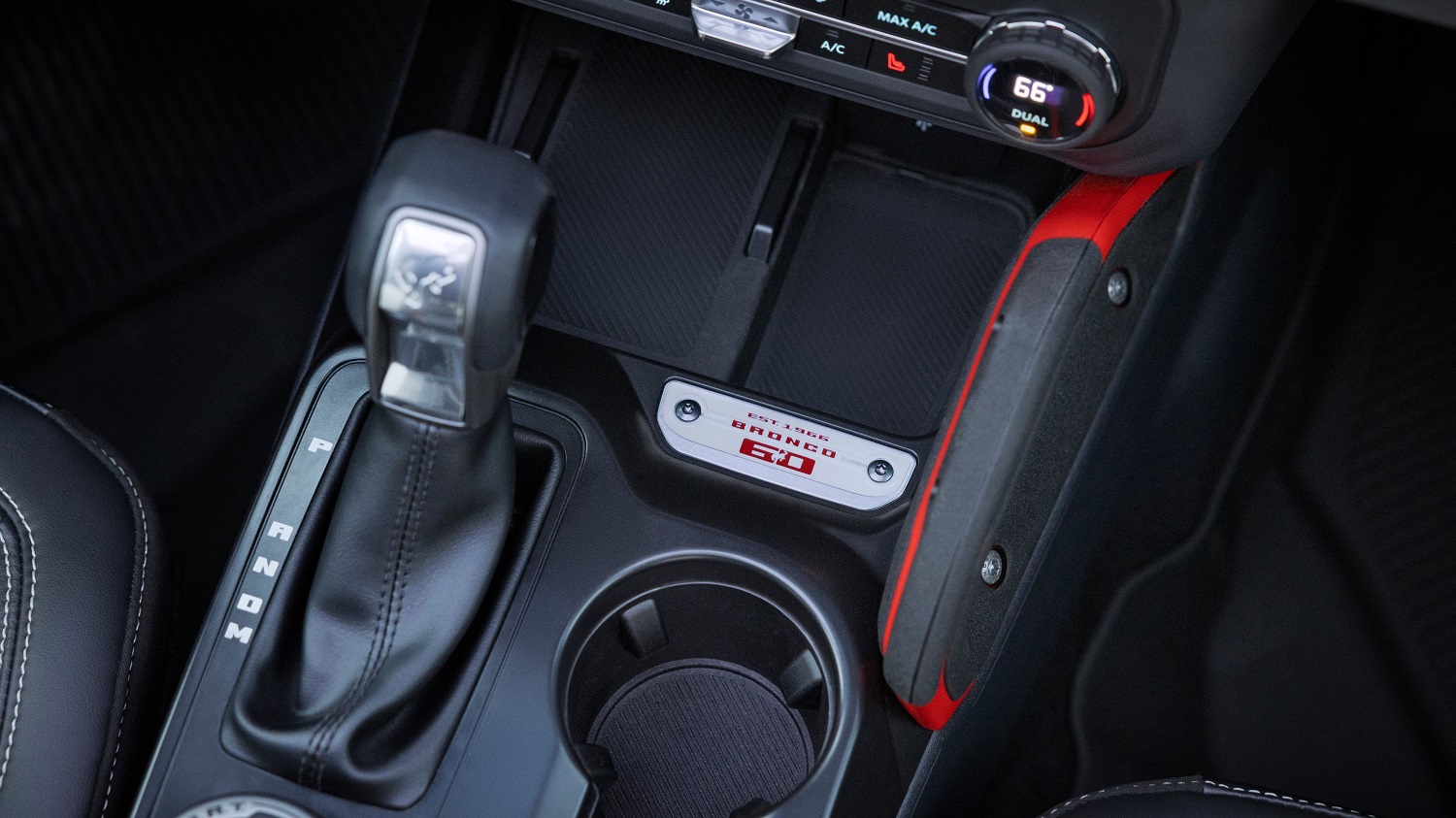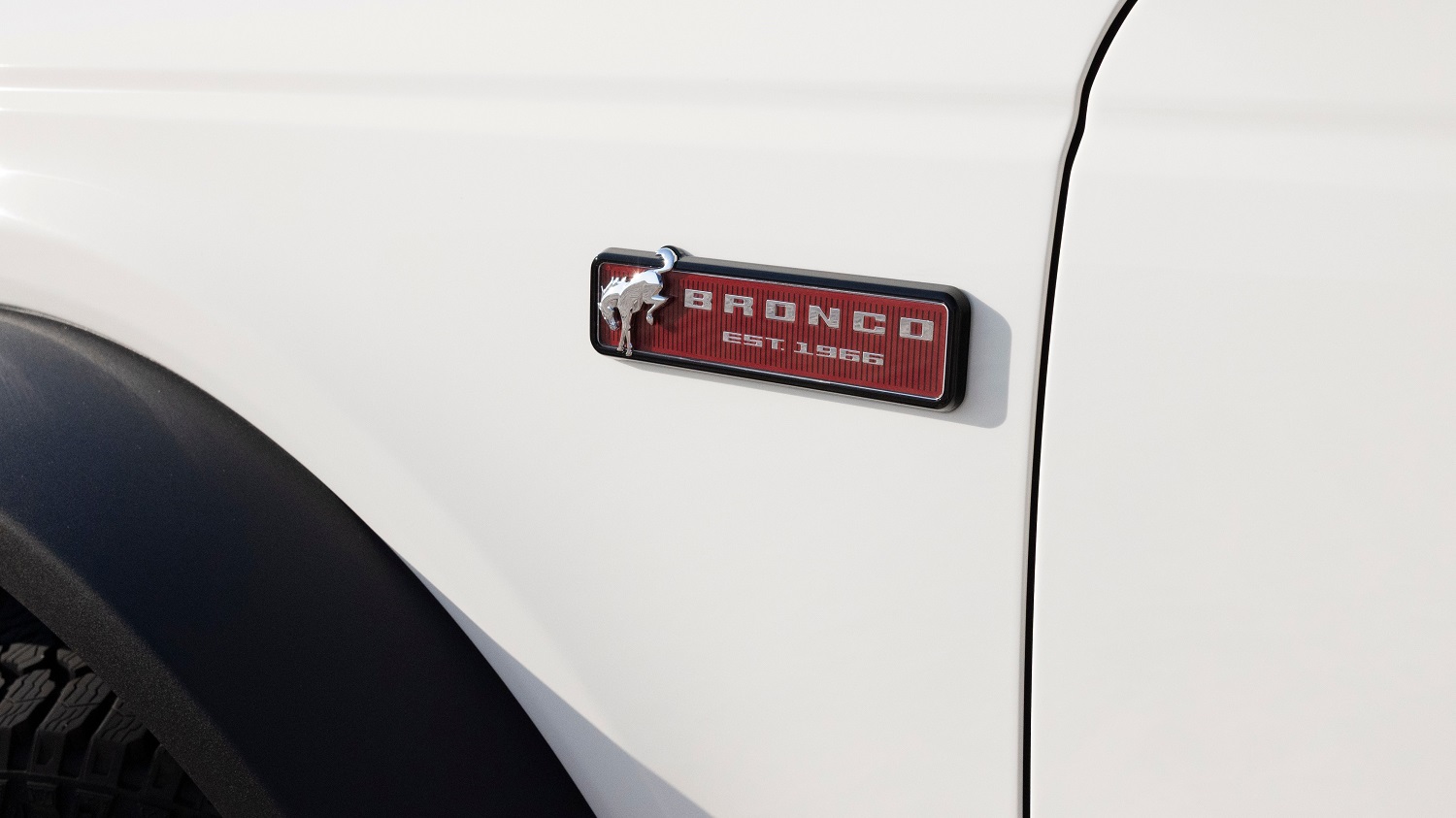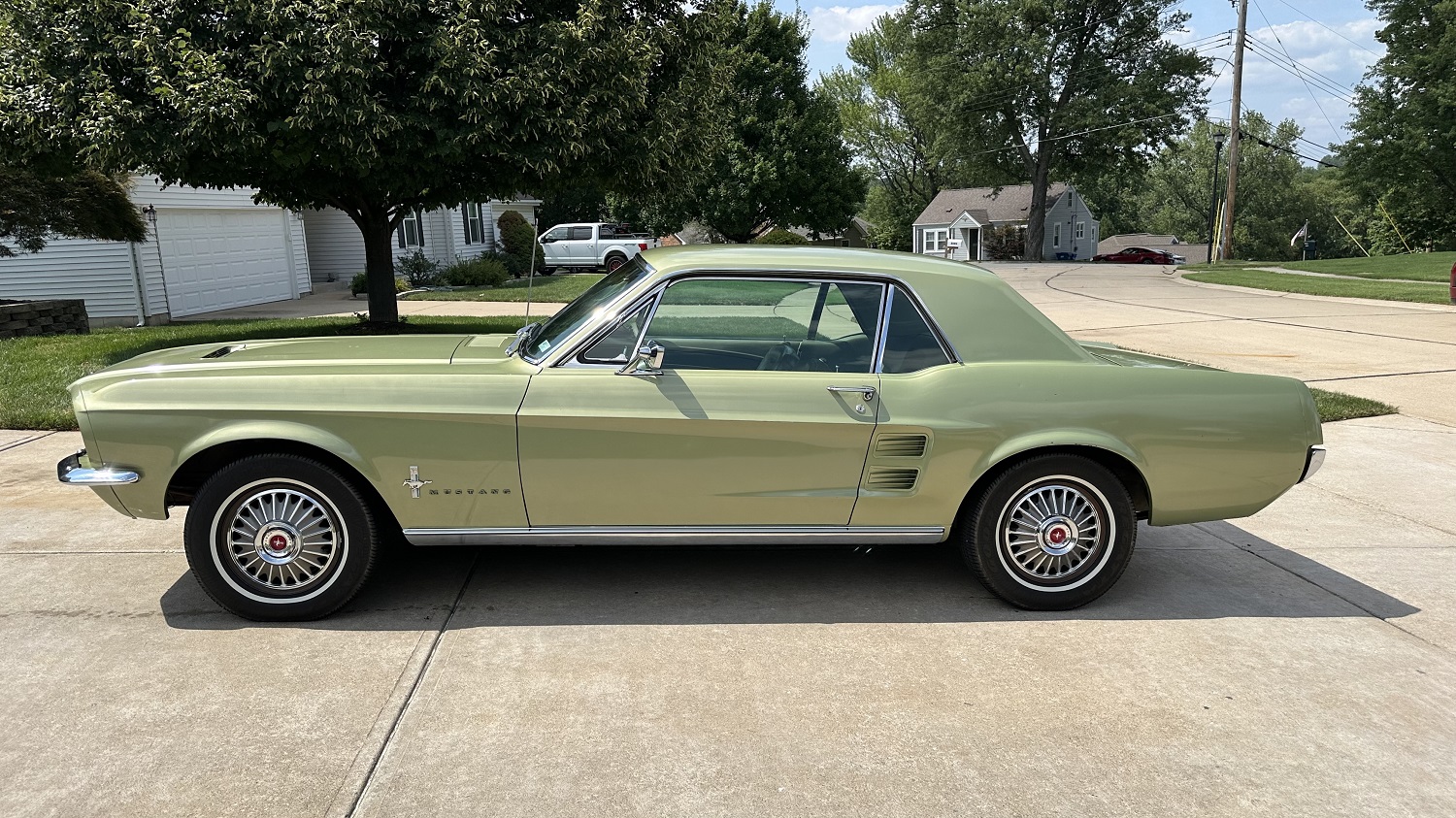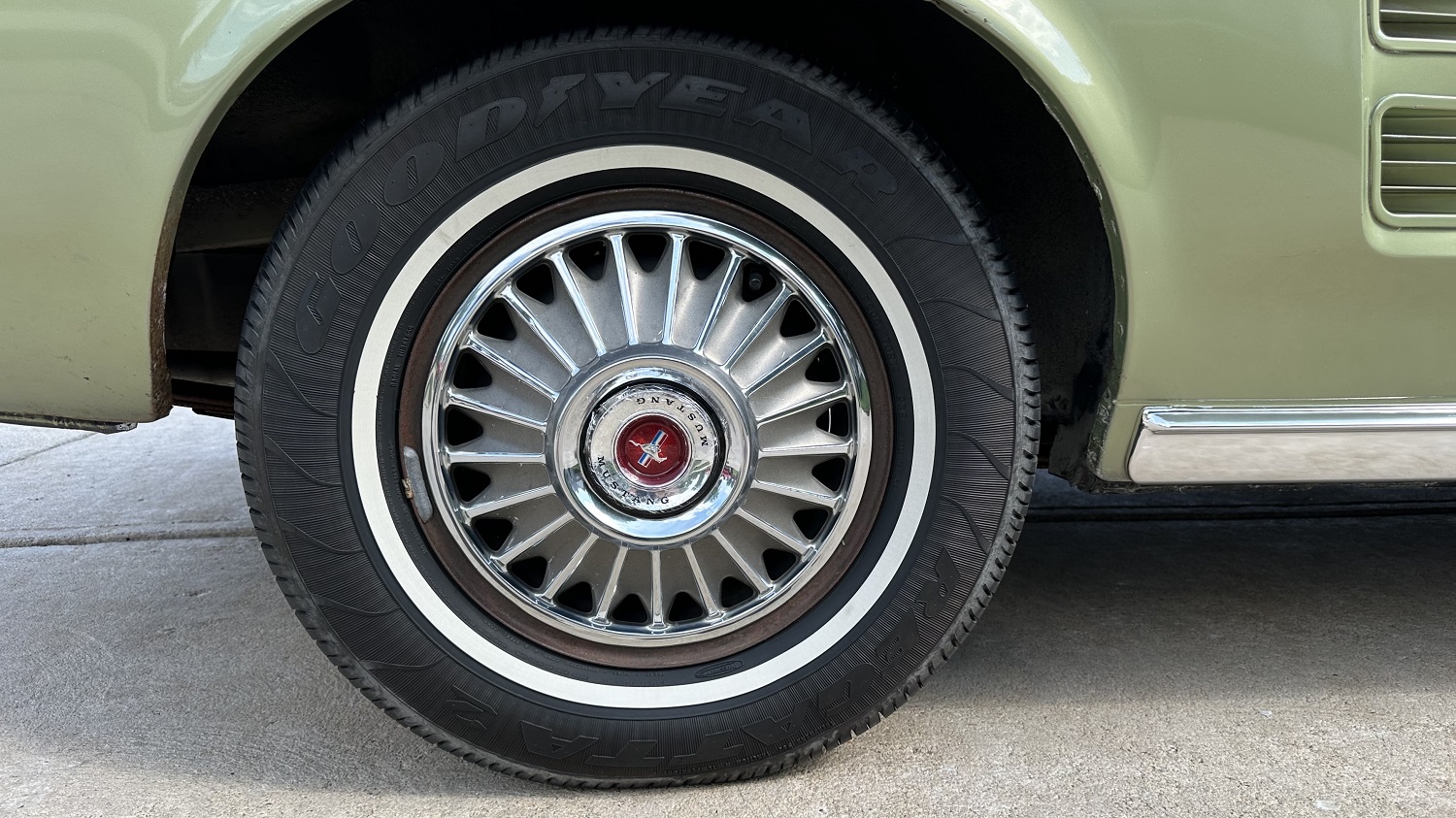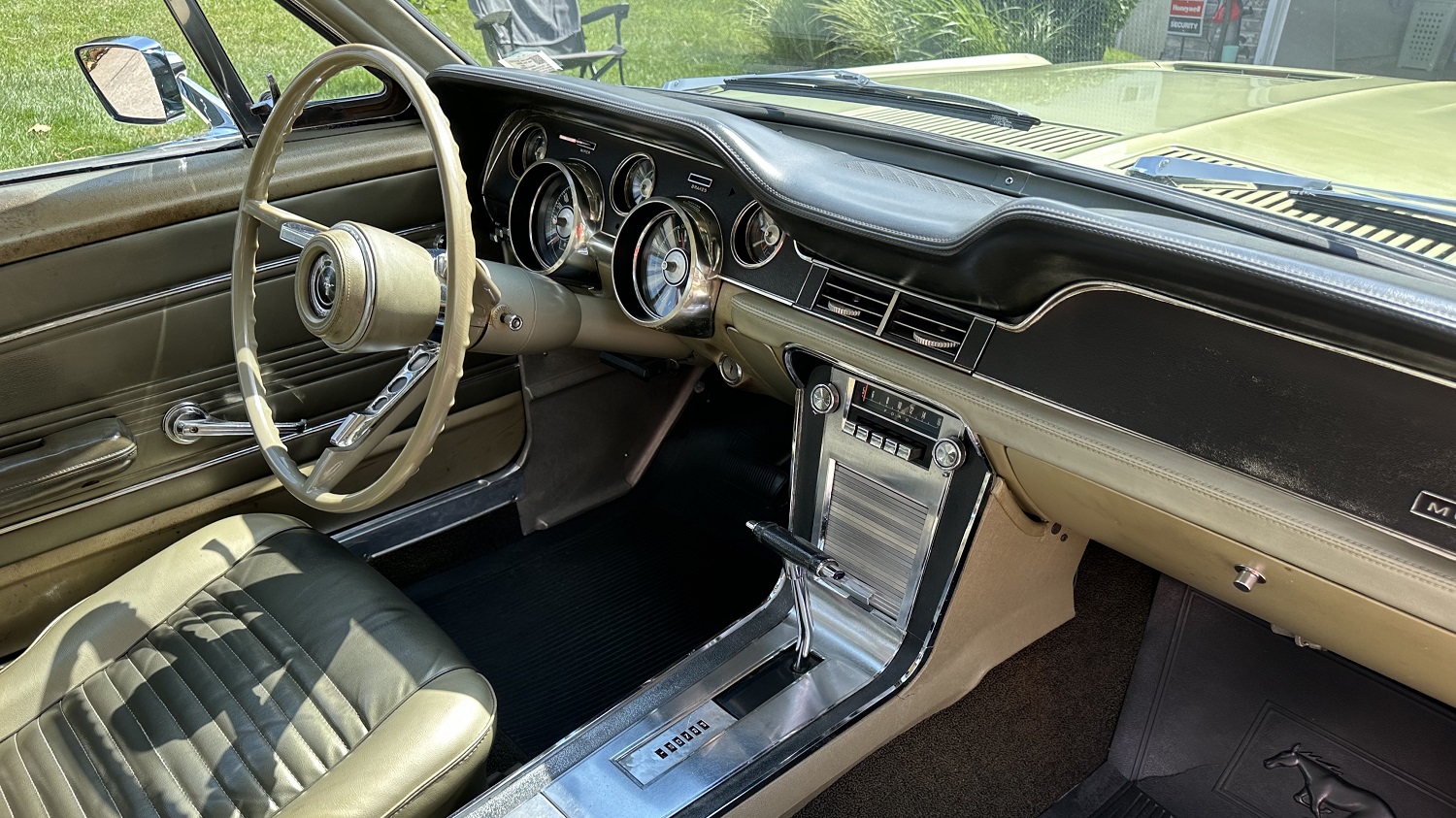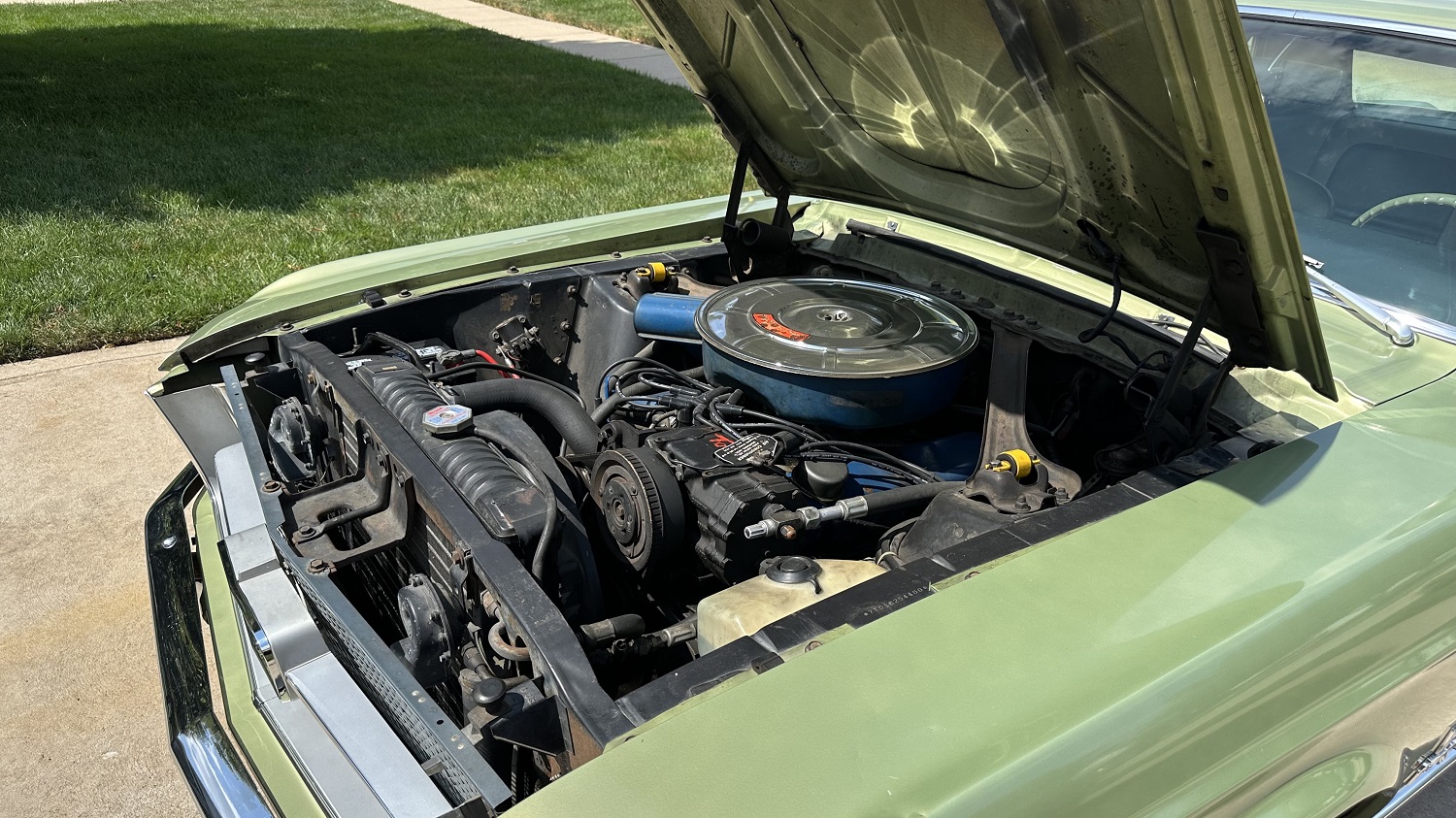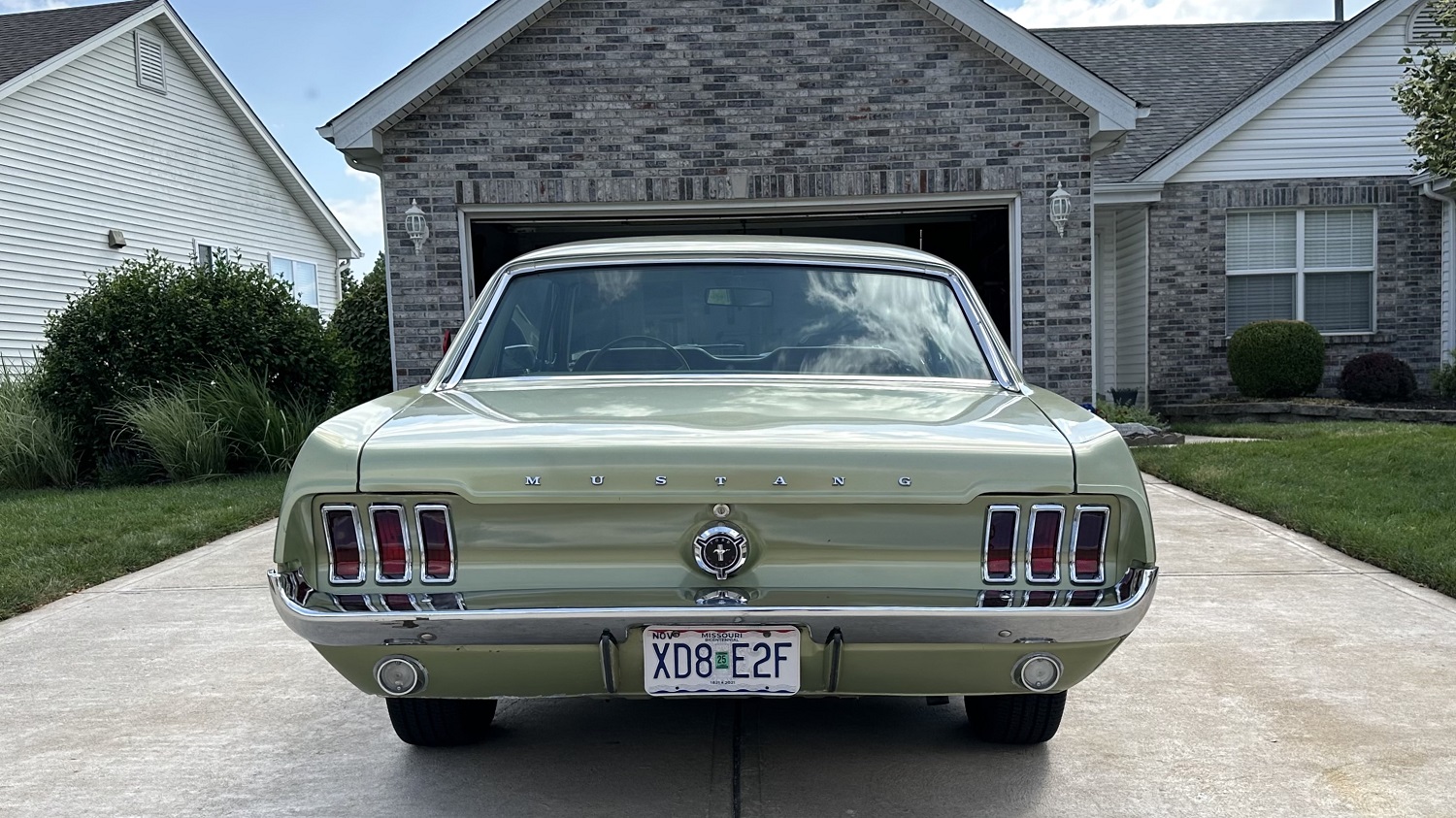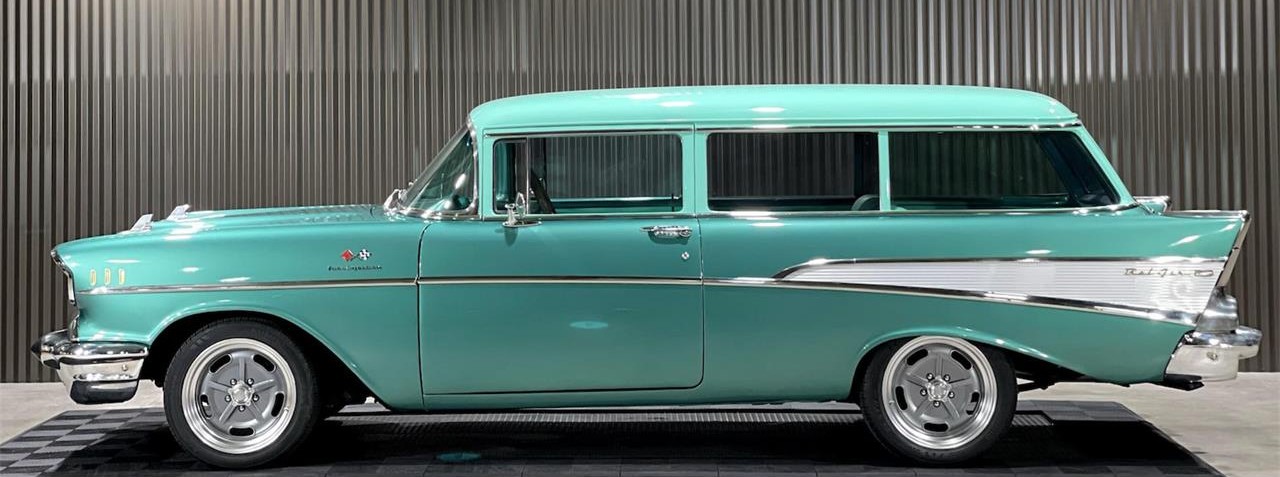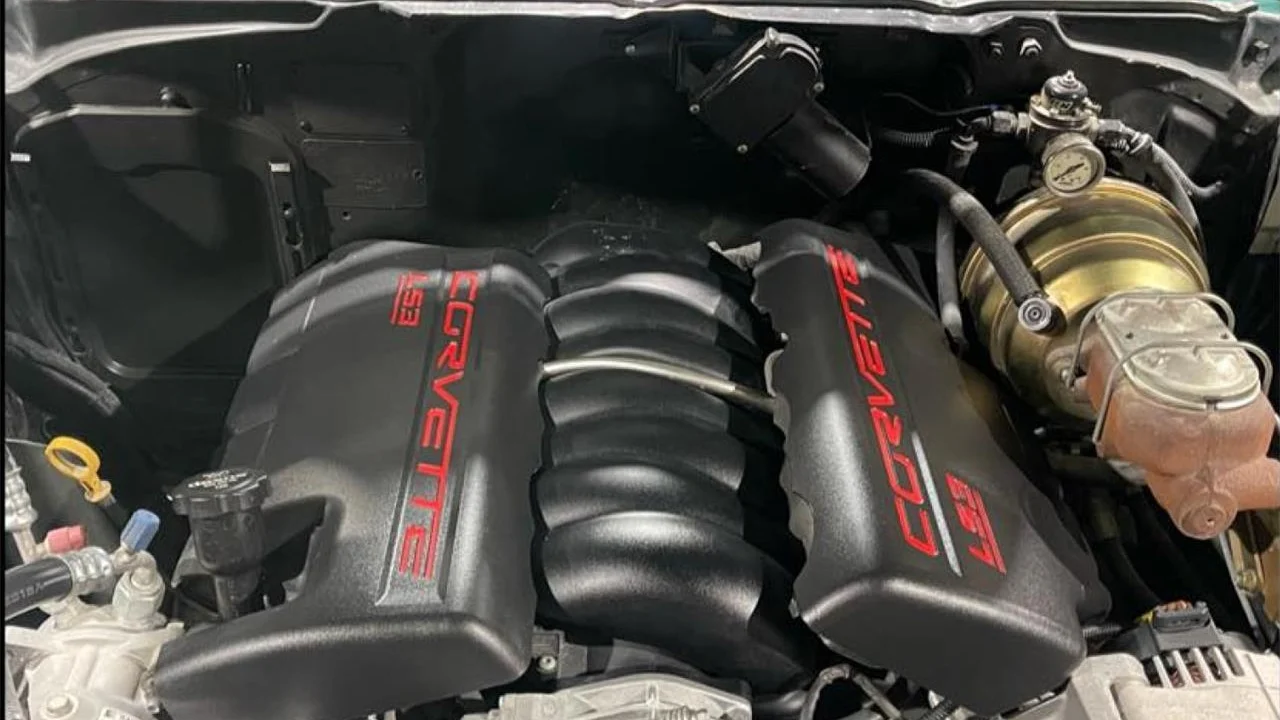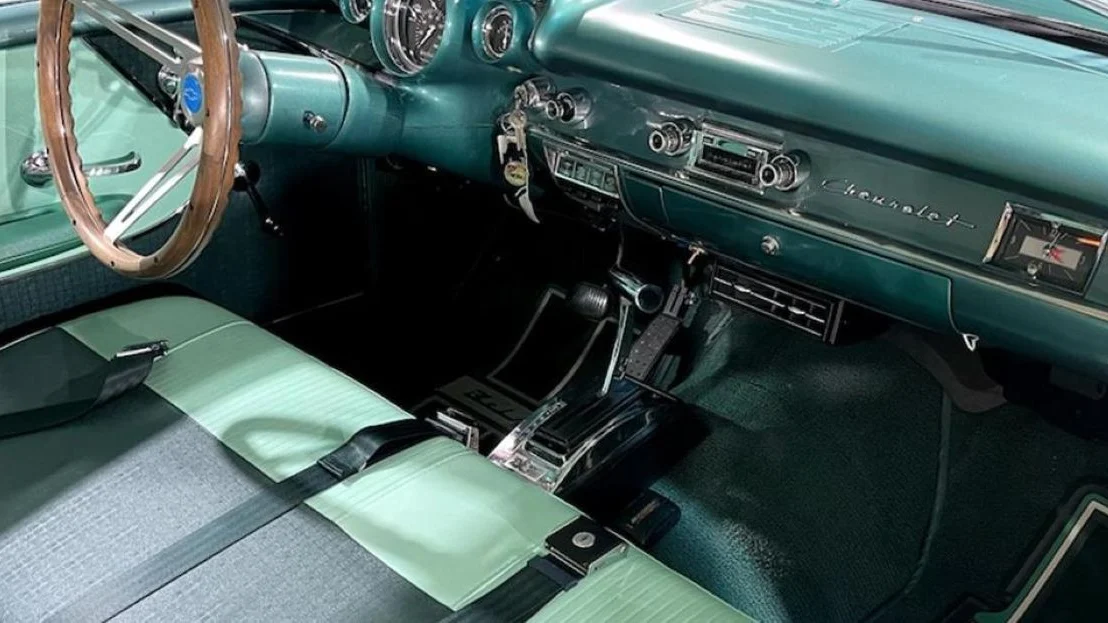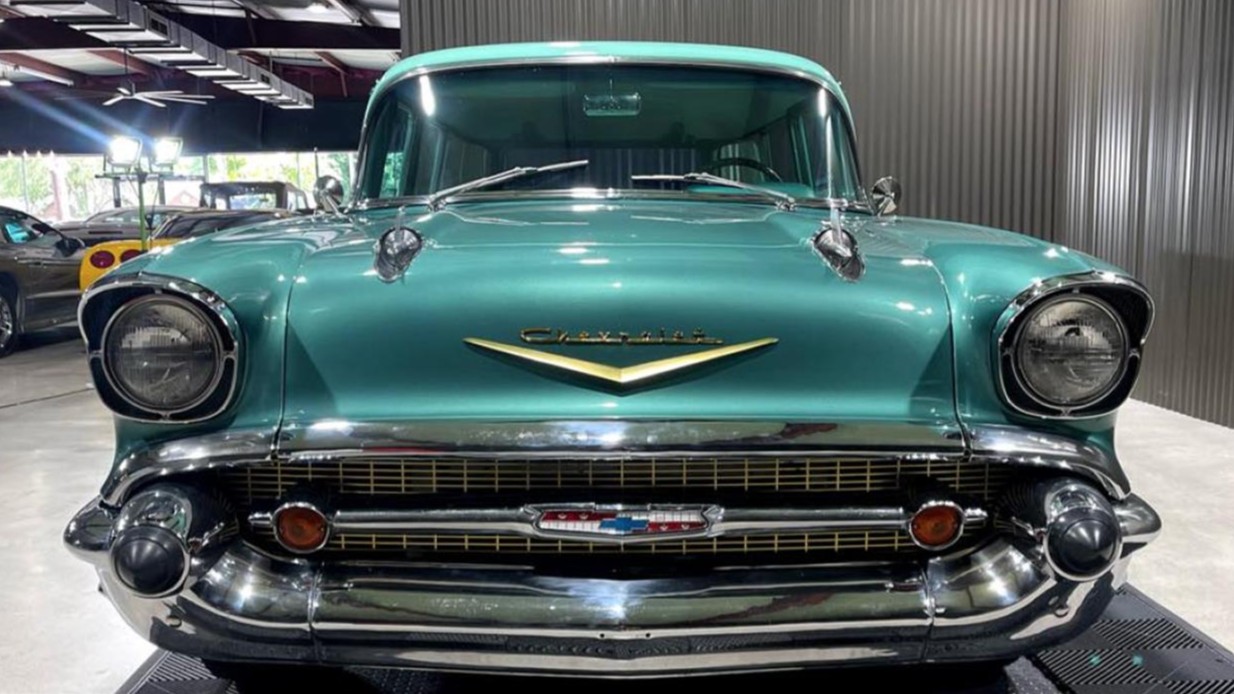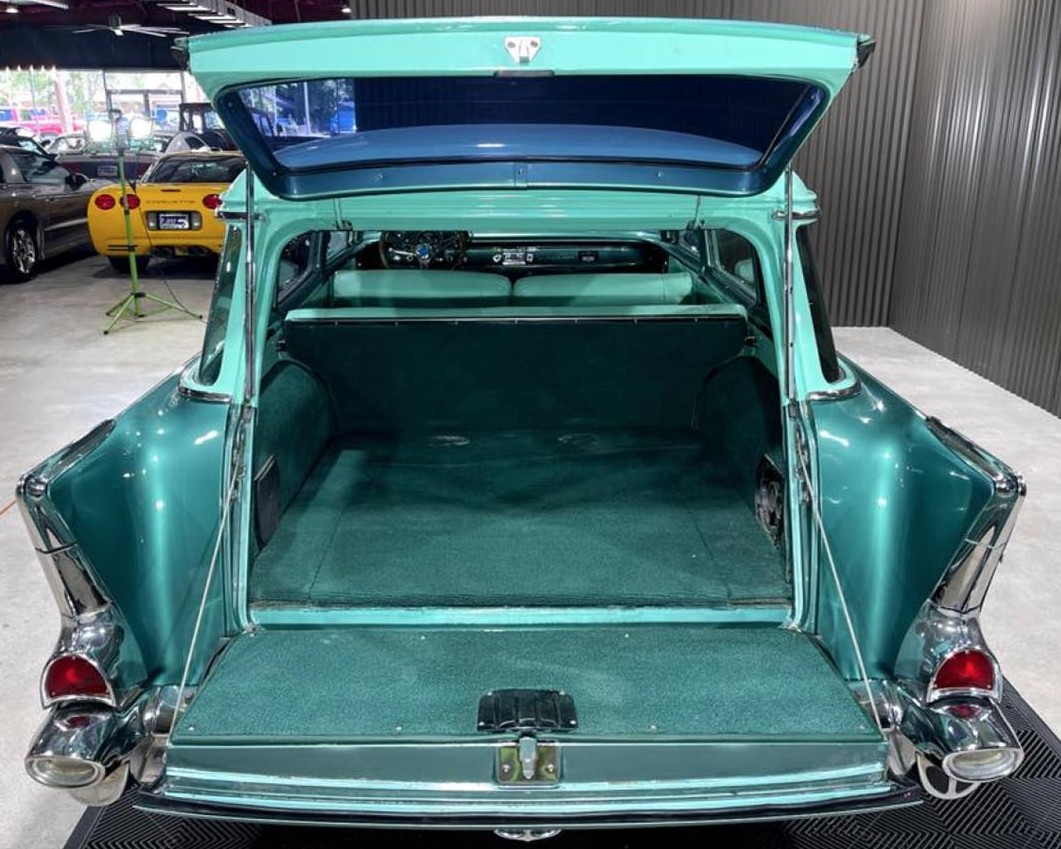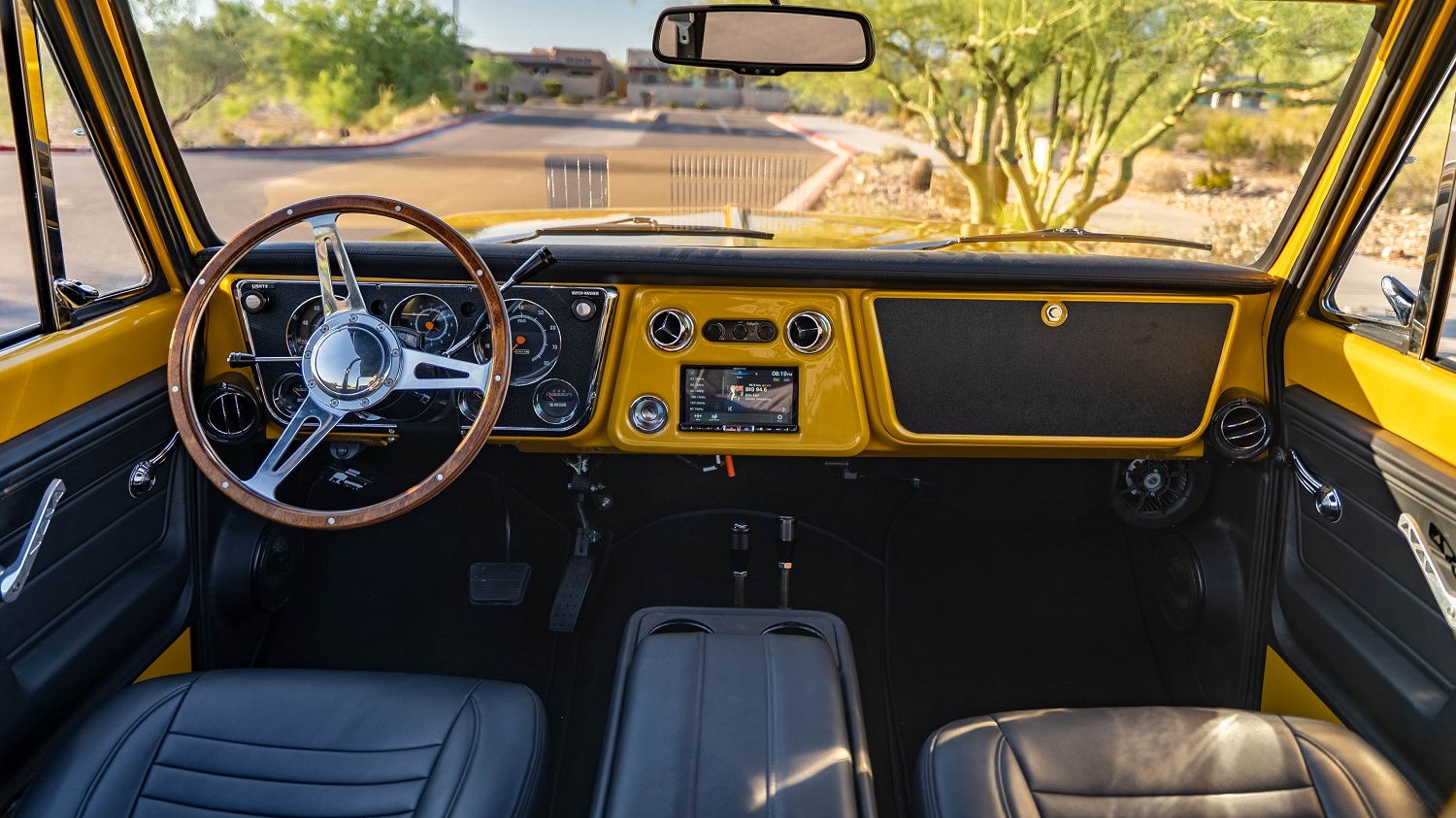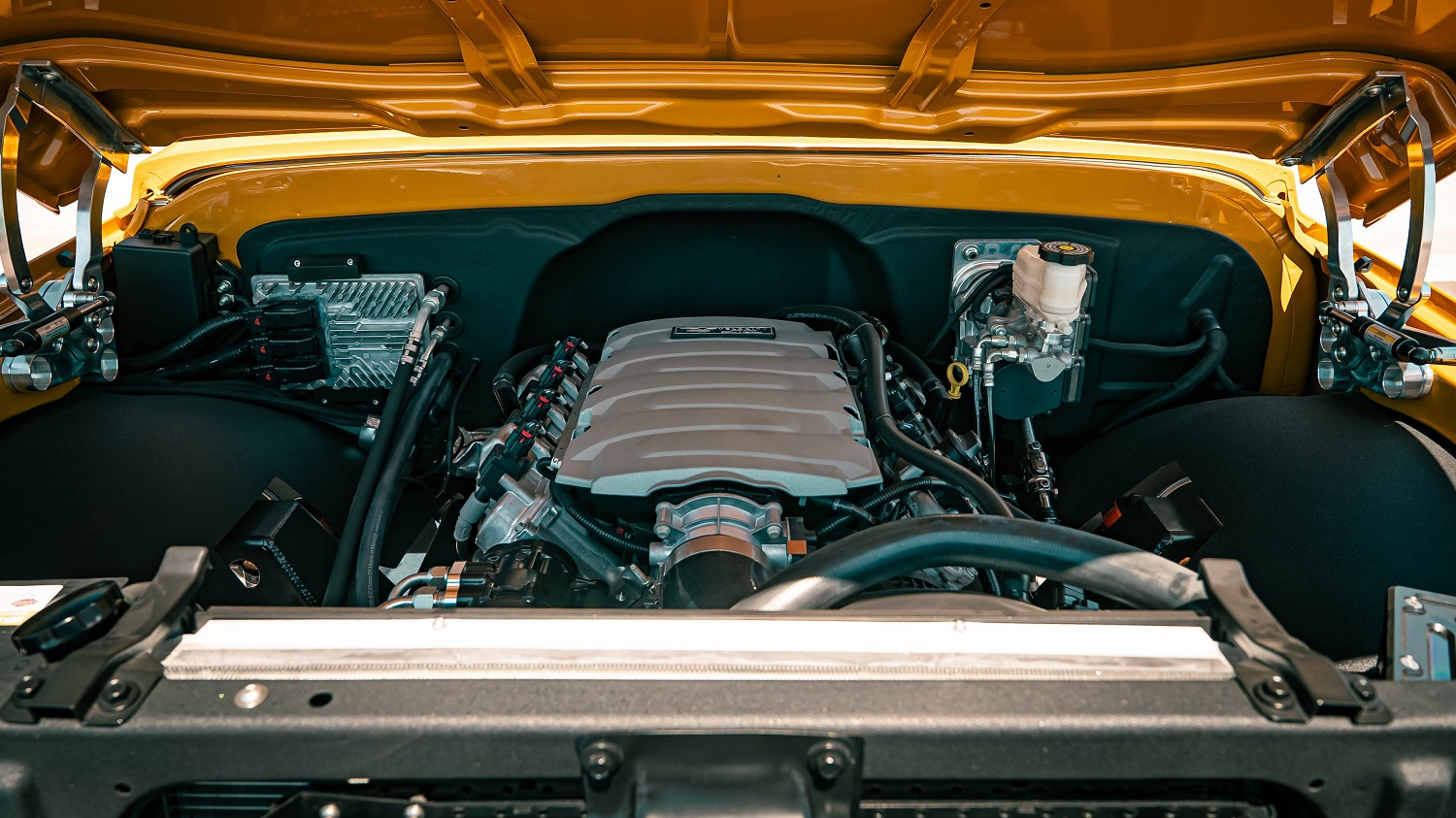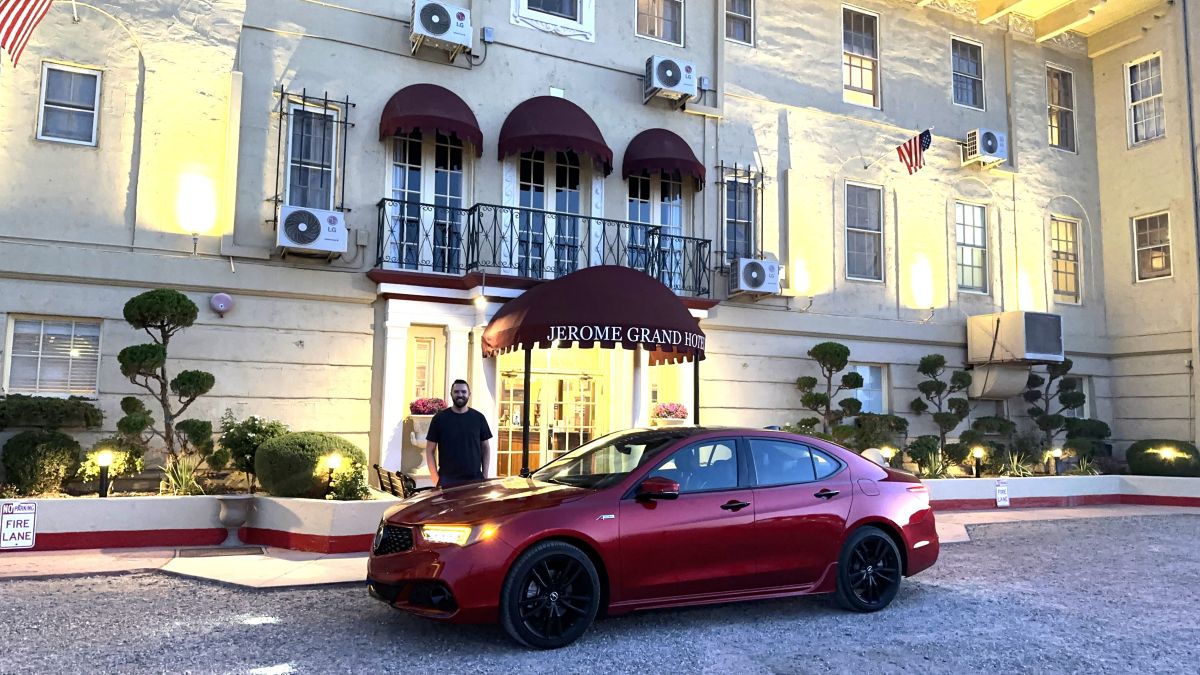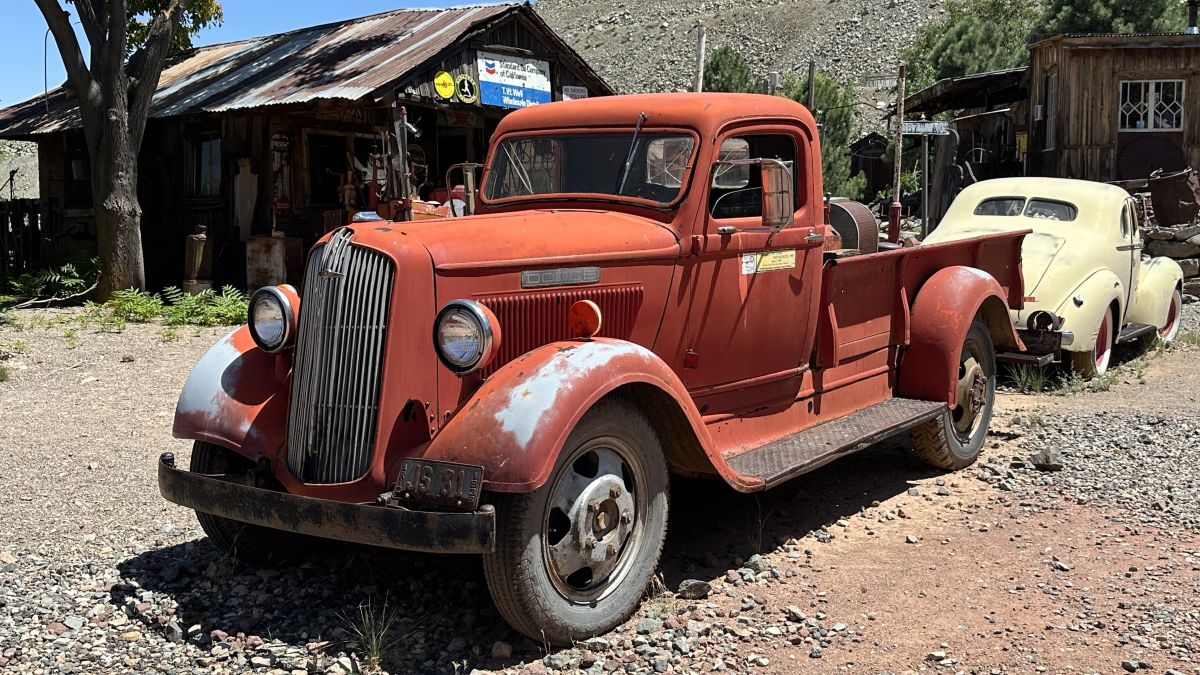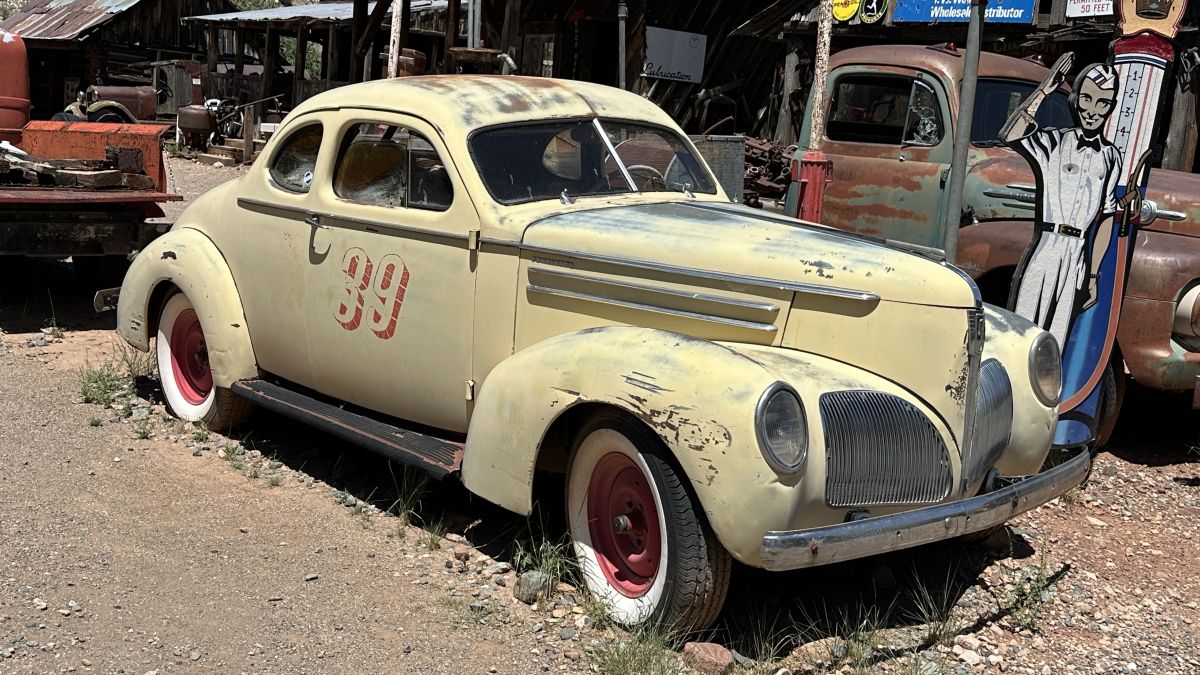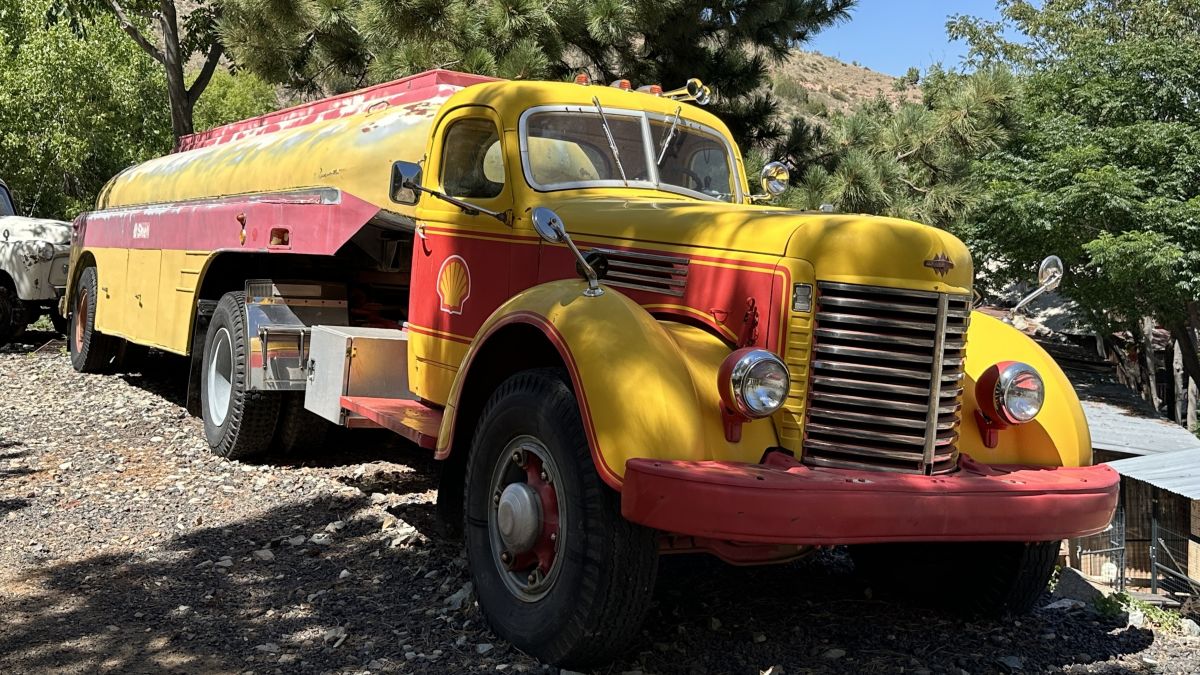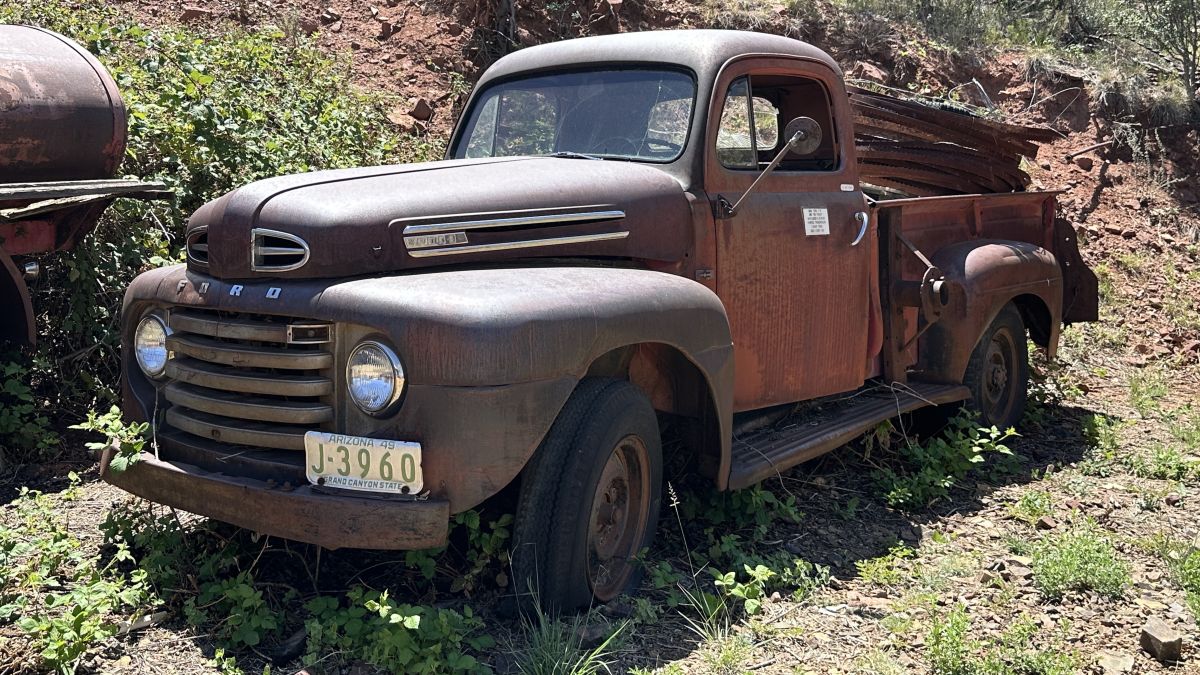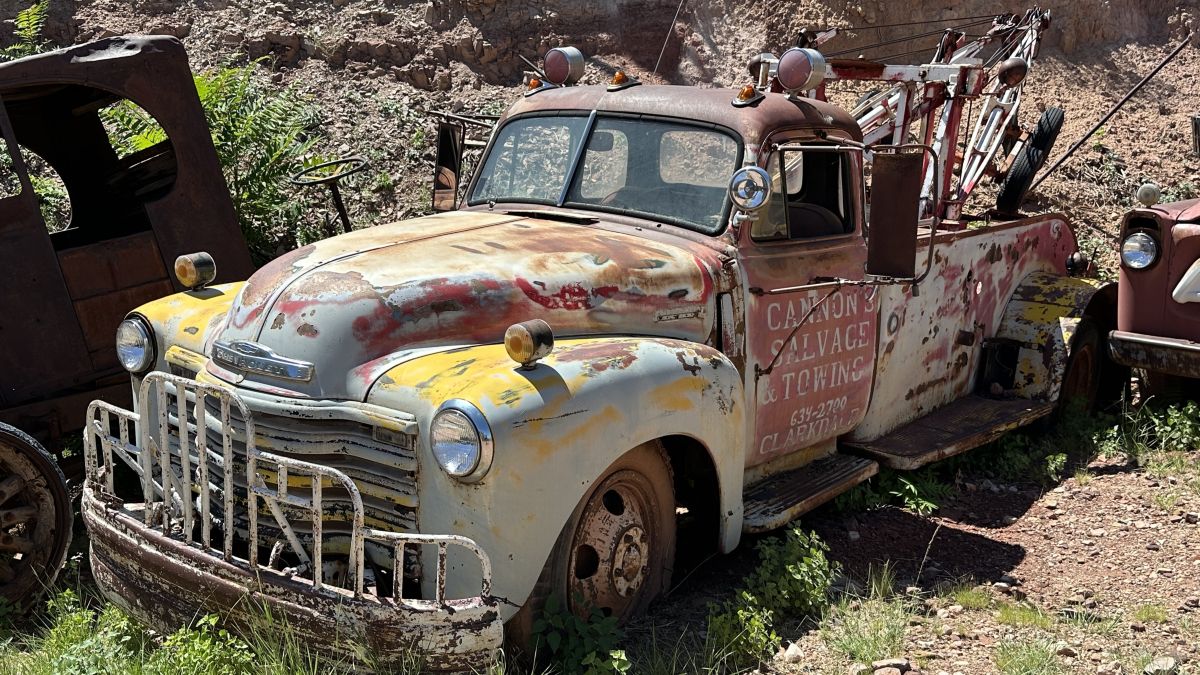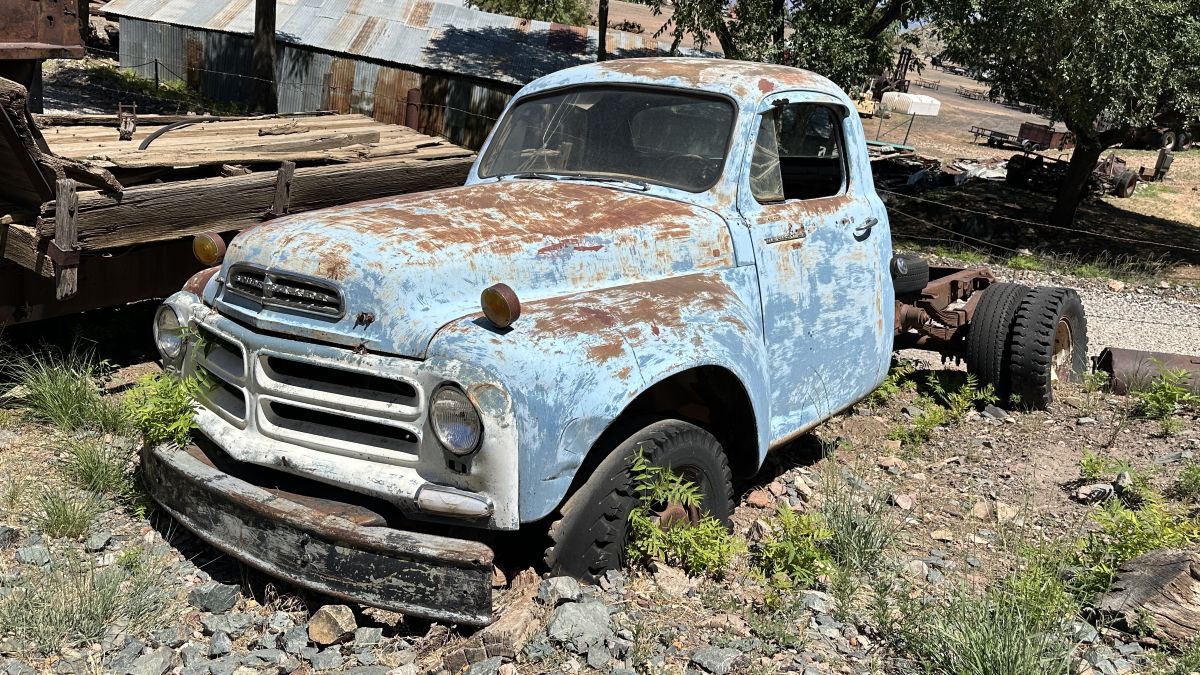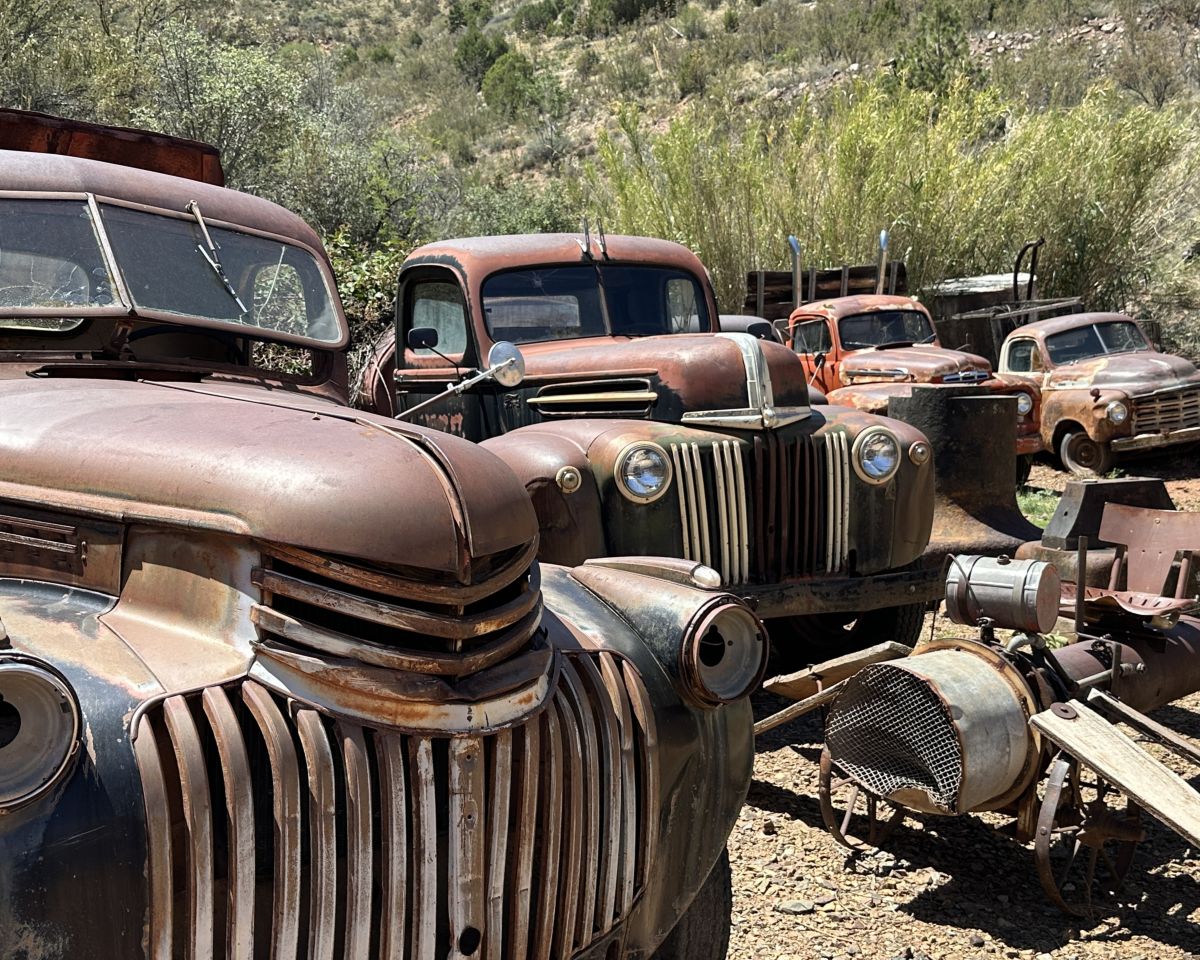This 1953 Ford F-100 panel truck was acquired by the seller’s cousin in the early 1990s, and it was customized in Indiana around 1995 with the installation of a Chevrolet 350ci V8, a GM three-speed automatic transmission, underpinnings from a Plymouth Volaré, tweed upholstery, and an aftermarket sound system. The seller purchased the truck from his cousin’s estate in 2020, and subsequent work involved adding painted flames and lettering over the black paint and installing a differential with 3.50:1 gearing as well as replacing the radiator, valve-cover gaskets, spark plugs, and grille. Features include air conditioning, tilt steering, Dolphin gauges, a car alarm, a Holley carburetor, an Edelbrock intake manifold, ambulance-style rear doors, running boards, Weld 15″ wheels, and power brakes. This modified F-100 is now offered with a clean Michigan title in the seller’s name.
The panel-truck body was repainted black in the mid-1990s, and gold-colored flames, pinstripes, and “Snake Oil Roasters” lettering was hand-painted on the vehicle in 2020, the seller tells us. The truck hit a deer in 2023, and subsequent repairs involved touch-up paintwork as well as replacement of the dual-bar grille, the chrome front bumper, and the headlight surrounds. Equipment includes running boards, dual side mirrors, turn signals, brake lights, and a chrome rear bumper. The seller notes rust around the rear-wheel openings and paint imperfections on the hood.
Weld Racing 15″ aluminum wheels are mounted with 265/50 front and 295/50 rear Cooper Cobra Radial G/T tires. Braking is provided by power-assisted front discs and rear drums. Front subframe and steering components from a Plymouth Volaré were adapted during the refurbishment, according to the seller.
The cabin has been reupholstered in gray tweed, from the front bench seat to the door panels, side panels, headliner, and under-dash area. The seat has a fold-down center armrest, and other interior appointments include body-color metal surfaces, overhead lights, red accent lighting, a cabin heater, and vent windows. An overhead-mounted Alpine CD head unit is wired to a Kicker amplifier and Kicker speakers. The aftermarket air conditioning system is noted to be operational but does not currently blow cold. A power-door-lock system has been partially disabled because the rear locks were not working properly, although the seller notes that the front-door power locks engage when the car alarm is activated. The seller also notes that trickle-charging is sometimes necessary to maintain the battery charge and suspects that there may be a drain from the accent lighting.
A two-spoke steering wheel from a Volaré is connected to a tilting column. Dolphin instrumentation in a bright surround consist of a 140-mph speedometer and gauges monitoring water temperature, oil pressure, fuel level, and voltage. The six-digit mechanical odometer shows 9k miles, approximately 5k of which were added under current ownership; true chassis mileage is unknown.

Ambulance-style doors provide access into the cargo area.
The Chevrolet 350ci V8 is said to have been original manufactured in the 1970s and was installed in this truck in 1995. The engine is augmented by an Edelbrock intake manifold, a Holley carburetor, an open-element air cleaner, and finned valve covers. The seller states that the fuel-tank float was replaced in 2020, the radiator and the A/C condenser were replaced in 2023 after the deer collision, and the valve-cover gasket and spark plugs were replaced in 2024.
Power is routed to the rear wheels through a three-speed automatic transmission that is said to have been matched from new with the 350ci Chevy engine. The differential was revised with 3.50:1 gearing in 2020. The seller notes an oil leak.

The chassis number on the identification tag shown above decodes as follows:
- F10 – F-100 truck
- R – 239ci flathead V8
- 3 – 1953 model year
- H – Highland Park, Michigan, assembly plant
- 53725 – Production sequence
